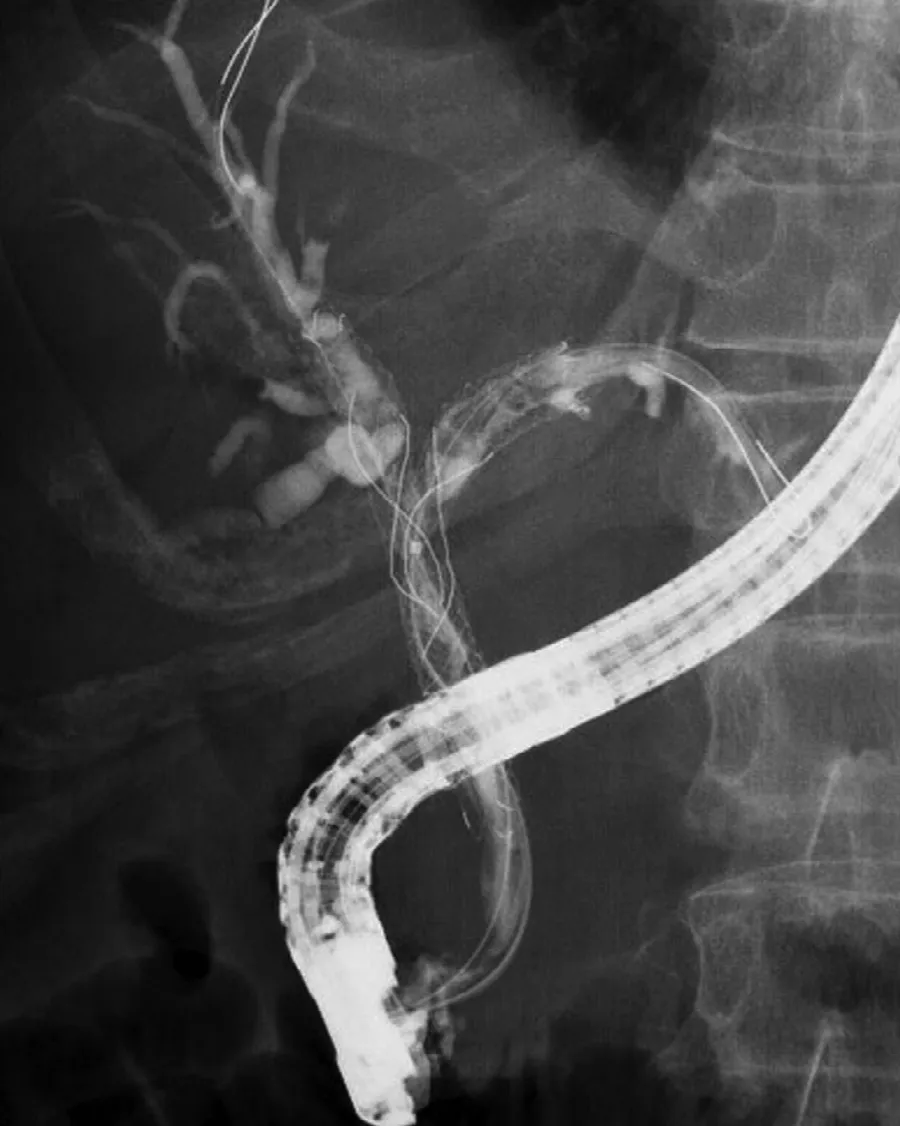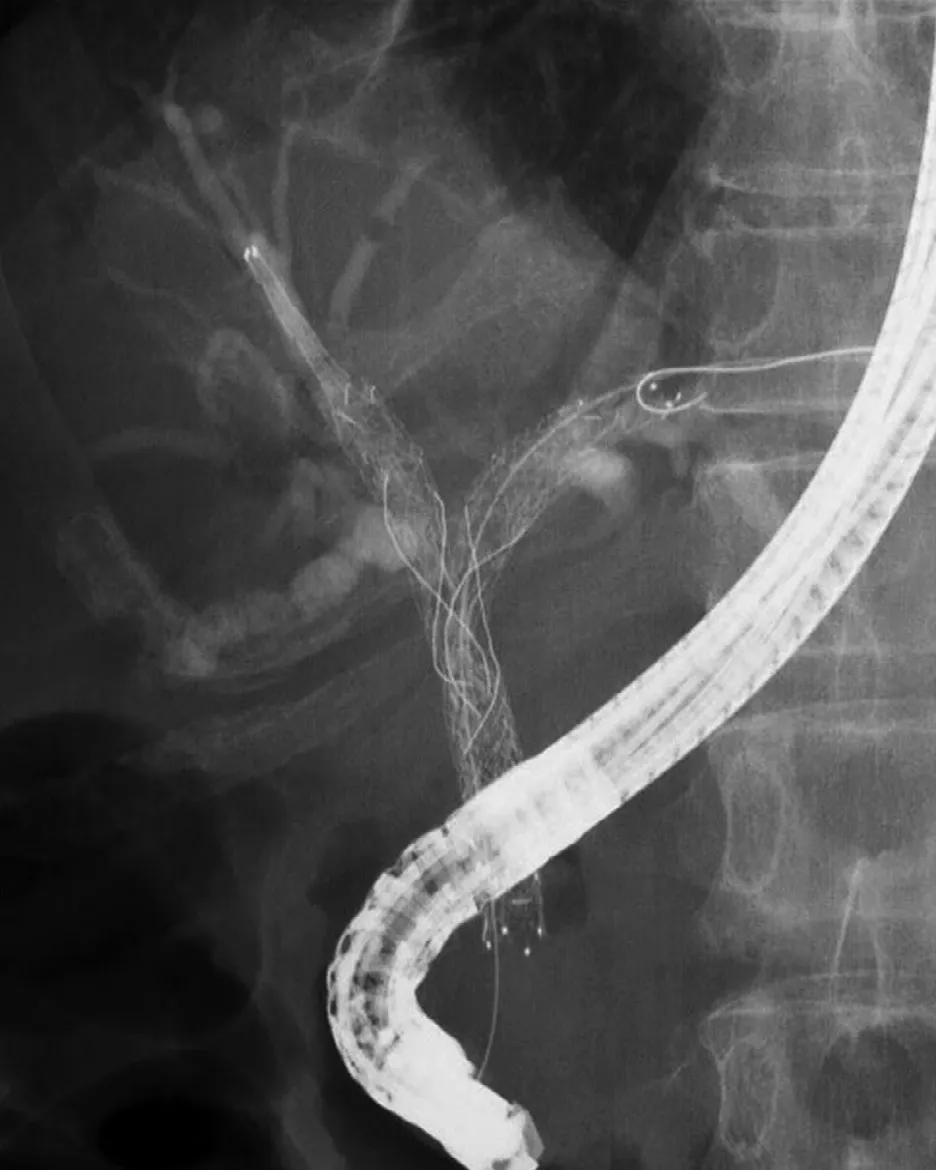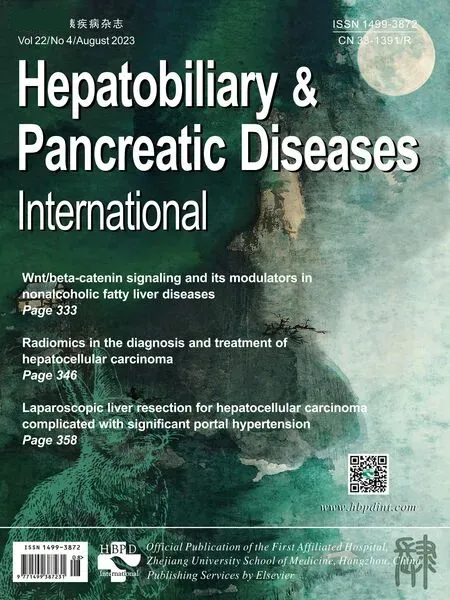Novel re-intervention device for occluded multiple uncovered self-expandable metal stent (with video)
Takeshi Ogura , Yuki Uba, Mitsuki Tomita, Kimi Bessho, Hiroki Nishikawa
2nd Department of Internal Medicine, Osaka Medical and Pharmaceutical University, 2-7 Daigakuchou, Takatsukishi, Osaka 569-8686, Japan
TotheEditor:
Obstructive jaundice due to unresectable malignant hilar obstruction can be treated by deployment of bilateral uncovered selfexpandable metal stents (UCSEMSs), which enable longer stent patency to be obtained compared with multiple plastic stents [1-3].However, re-intervention is needed if obstructive jaundice occurs after bilateral UCSEMS deployment.During re-intervention procedures, insertion of the stent delivery system across the mesh of a UCSEMS and into the bile duct can be challenging.A novel drill dilator has recently become available in Japan (Tornus ES;Asahi Intecc, Nagoya, Japan) ( Fig.1 ) [4].The tract is easily dilated using a clockwise rotation.We herein describe a successful reintervention using this device for a patient with occluded bilateral UCSEMSs.

Fig.1.The novel drill dilator (Tornus ES; Asahi Intecc).
An 81-year-old woman was admitted to our hospital with obstructive jaundice.She had undergone bilateral UCSEMS deployment for hepatic hilar cholangiocarcinoma six months previously,using the stent-in-stent method.We attempted re-intervention due to suspected stent obstruction.First, we injected contrast medium to evaluate the site of obstruction.The resulting cholangiogram revealed right and left hepatic bile duct obstruction ( Fig.2 ).A 0.025-inch guidewire was deployed at each bile duct.A 7-Fr UCSEMS delivery system was then inserted into the right hepatic bile duct and deployed successfully ( Fig.3 ).At the left bile duct,the guidewire was advanced across the mesh of the UCSEMS but the endoscopic retrograde cholangiopancreatography (ERCP)catheter could not be advanced.The novel drill dilator was then inserted into the common bile duct, and dilation of the mesh was performed easily ( Fig.4 ).After this procedure, a 7-Fr UCSEMS delivery system was inserted into the left hepatic bile duct across the UCSEMS mesh and deployed successfully ( Fig.5 ,Video S1).

Fig.2.Cholangiography reveals occlusion of bilateral uncovered self-expandable metal stents.

Fig.3.Re-intervention of the occluded right hepatic bile duct was performed successfully using an uncovered self-expandable metal stent.

Fig.4.The mesh of the uncovered self-expandable metal stent was dilated using the novel drill dilator.

Fig.5.Re-intervention of the occluded left hepatic bile duct was performed successfully using an uncovered self-expandable metal stent.
In conclusion, the novel drill dilation device may be useful in the case of occluded multiple UCSEMS, although further evaluation is needed.
Acknowledgments
None.
CRediT authorship contribution statement
Takeshi Ogura:Conceptualization, Data curation, Writing -original draft.Yuki Uba:Writing - review & editing.Mitsuki Tomita:Writing - review & editing.Kimi Bessho:Writing - review& editing.Hiroki Nishikawa:Writing - review & editing.
Funding
None.
Ethical approval
Written informed consent was obtained from the patient.
Competing interest
The author or authors do not choose to declare any conflict of interest related directly or indirectly to the subject of this article.
Supplementary materials
Supplementary material associated with this article can be found, in the online version, at doi:10.1016/j.hbpd.2023.04.005.
 Hepatobiliary & Pancreatic Diseases International2023年4期
Hepatobiliary & Pancreatic Diseases International2023年4期
- Hepatobiliary & Pancreatic Diseases International的其它文章
- The impact of metabolic dysfunction-associated fatty liver disease on the prognosis of patients with hepatocellular carcinoma after radical resection
- Hepatopancreatoduodenectomy for the treatment of extrahepatic cholangiocarcinoma ✩
- Laparoscopic liver resection for hepatocellular carcinoma complicated with significant portal hypertension: A propensity score-matched survival analysis
- Clinical analysis of Wernicke encephalopathy after liver transplantation
- Hepatobiliary&Pancreatic Diseases International
- Wnt/beta-catenin signaling and its modulators in nonalcoholic fatty liver diseases
